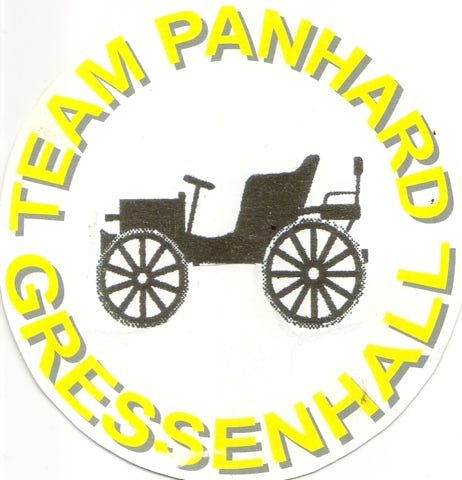
History of the 1899 Panhard



The French automobile company Panhard et Levassor was established in 1887 and began building cars under licence from Daimler. They built their first motor car in 1890 - a mid-engine back-to-back horseless carriage. Steering was by a tiller. The following year they introduced their Système Panhard (the engine at the front, with rear driven wheels, and a crude sliding-gear transmission). The Système Panhard established the architecture of the modern motor car.
From 1898, the Panhard et Levassor cars were equipped with steering wheels as standard. Charles Rolls (later of Rolls Royce fame) introduced the first car in Britain fitted with a steering wheel when he imported a six horse-power Panhard from France in 1898.
The official Panhard register shows that our Panhard No 1617 was delivered to the ‘Palais de l’Auto’ in Paris on 24th May 1899. At that point it was sold without its body work.
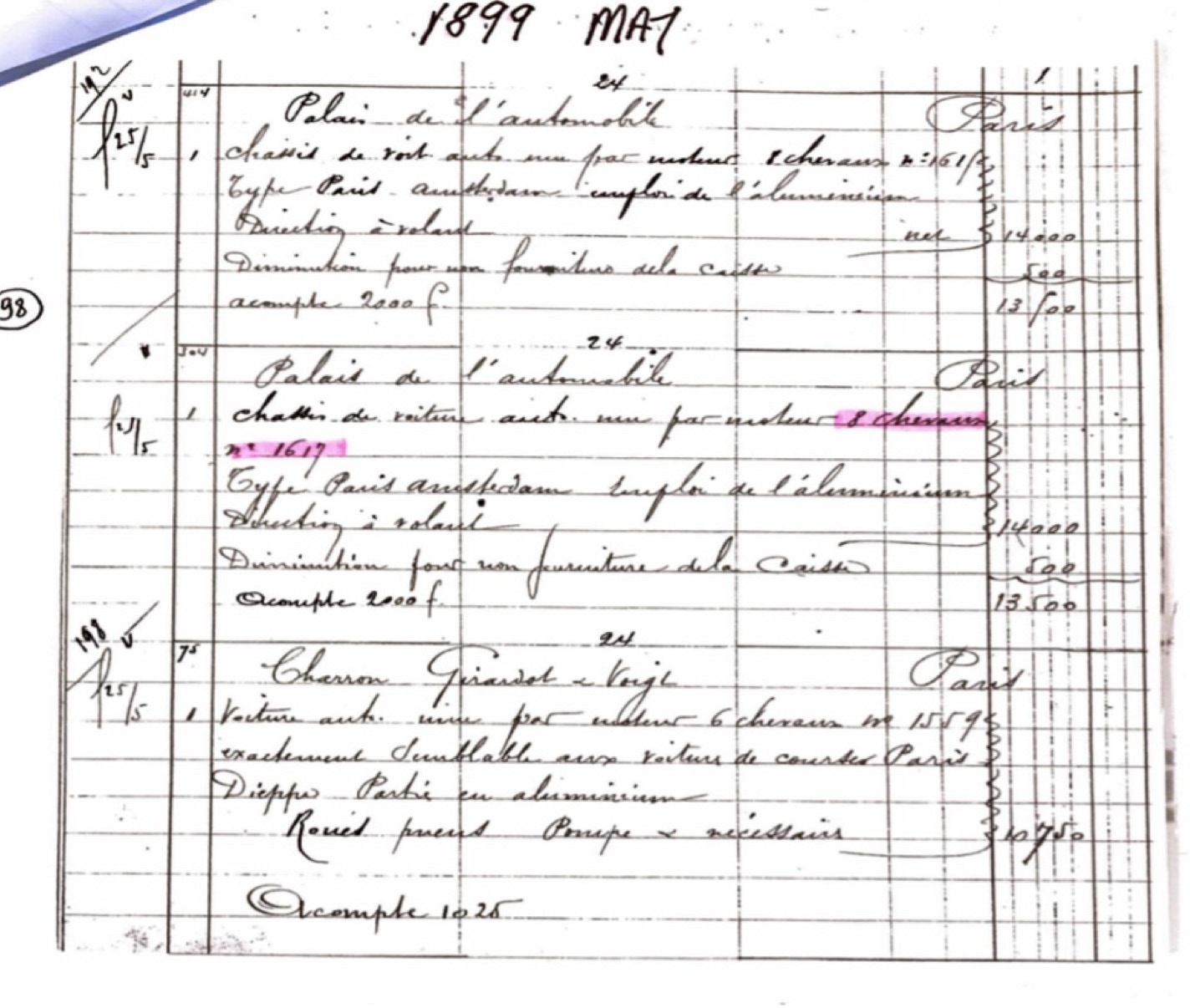
The engine type is ‘M4E Course’ and the chassis type is ‘Paris-Amsterdam’. There is a suggestion that Panhard built a series of cars for the 1898 Paris-Amsterdam-Paris race, and that twelve of these cars were subsequently sold in 1899. A distinguishing feature of these cars were aluminium casings for the crankcase and gearbox, amongst other things. The museum car has these lightweight casings. It raises speculation that the car is actually a race car from 1898, but more research is required to establish this.
We don’t know who it was sold to but, on 1st September 1899, it was being serviced by Panhard, and the customer was the Prince de Tarente, of Avenue Malakoff, Paris.
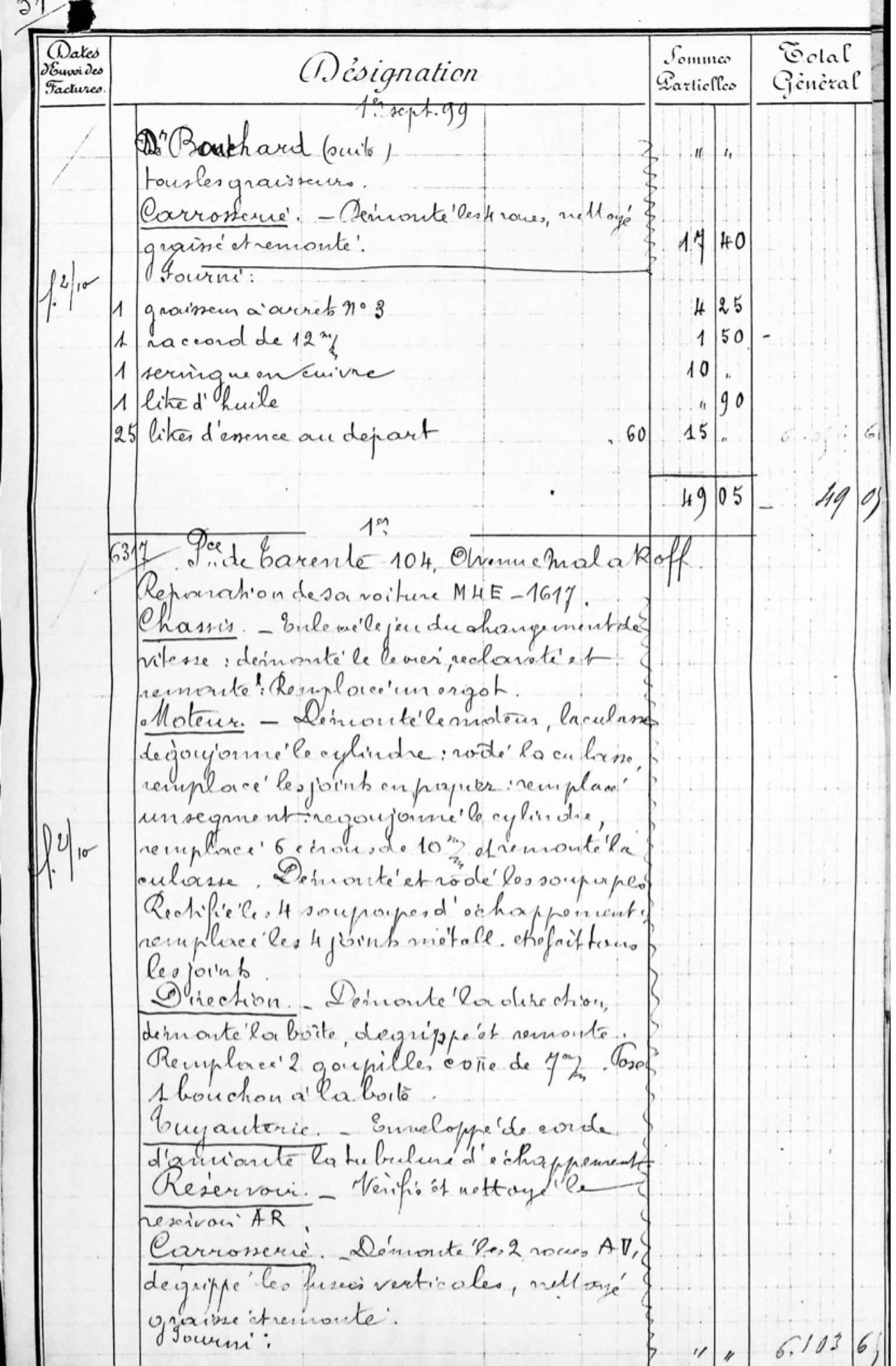
The belief is that Charles Rolls purchased this car for £1250 in late 1899 and drove it back to the UK. His insignia is still on the side of the car.
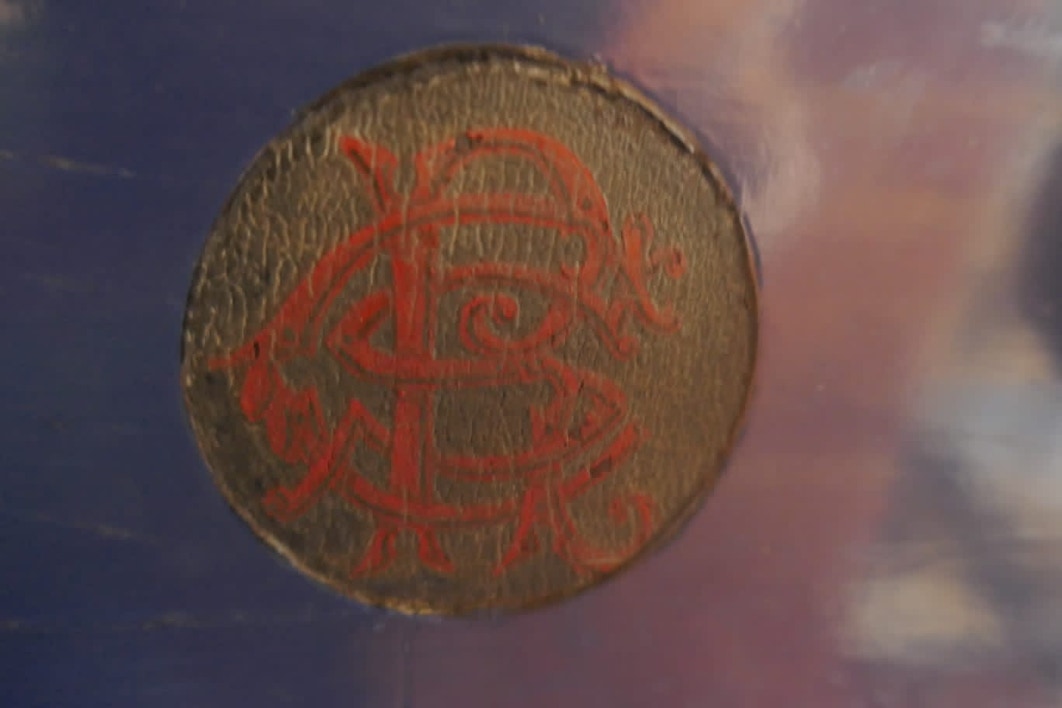
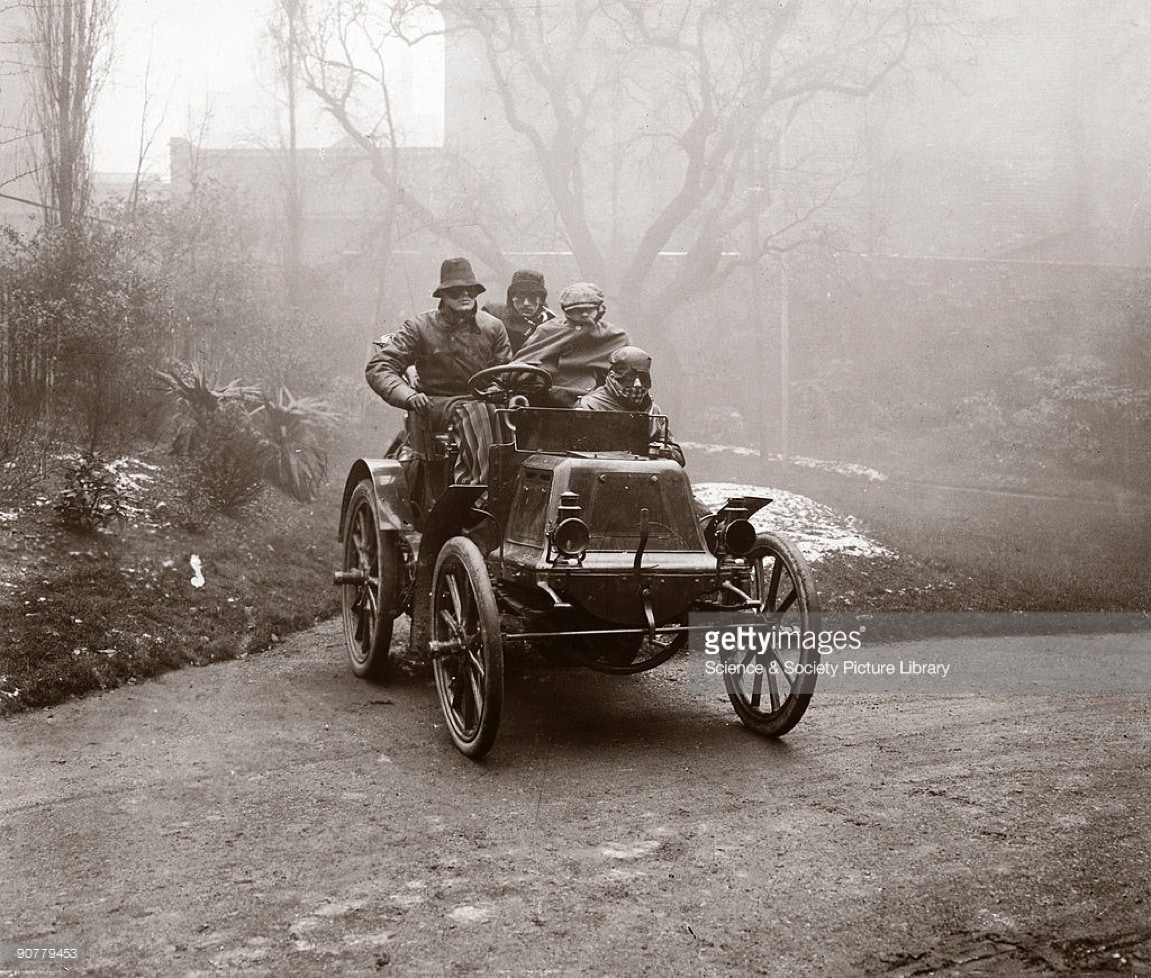
Charles Rolls pictured in our Panhard in late 1899
Early in 1900 Rolls sold the car to Mark Mayhew for £1200.
Mayhew drove the car in the 1000 Mile Trial (23rd April – 12th May 1900). Although he failed to complete all stages of the trial, he distinguished himself by coming second in the speed trial at Welbeck Park with an average speed of 29.6 mph.
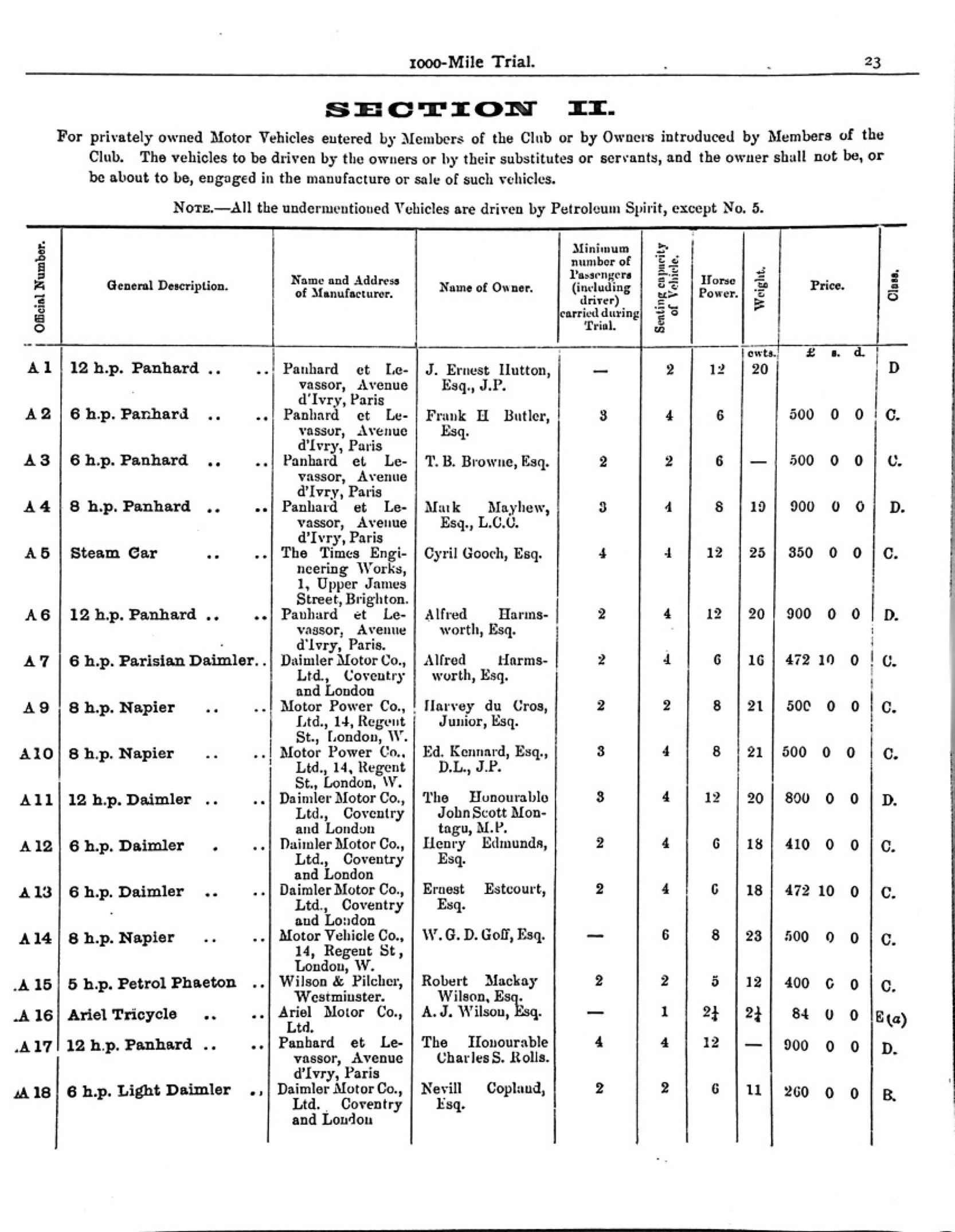
Mark Mayhew in the driving seat
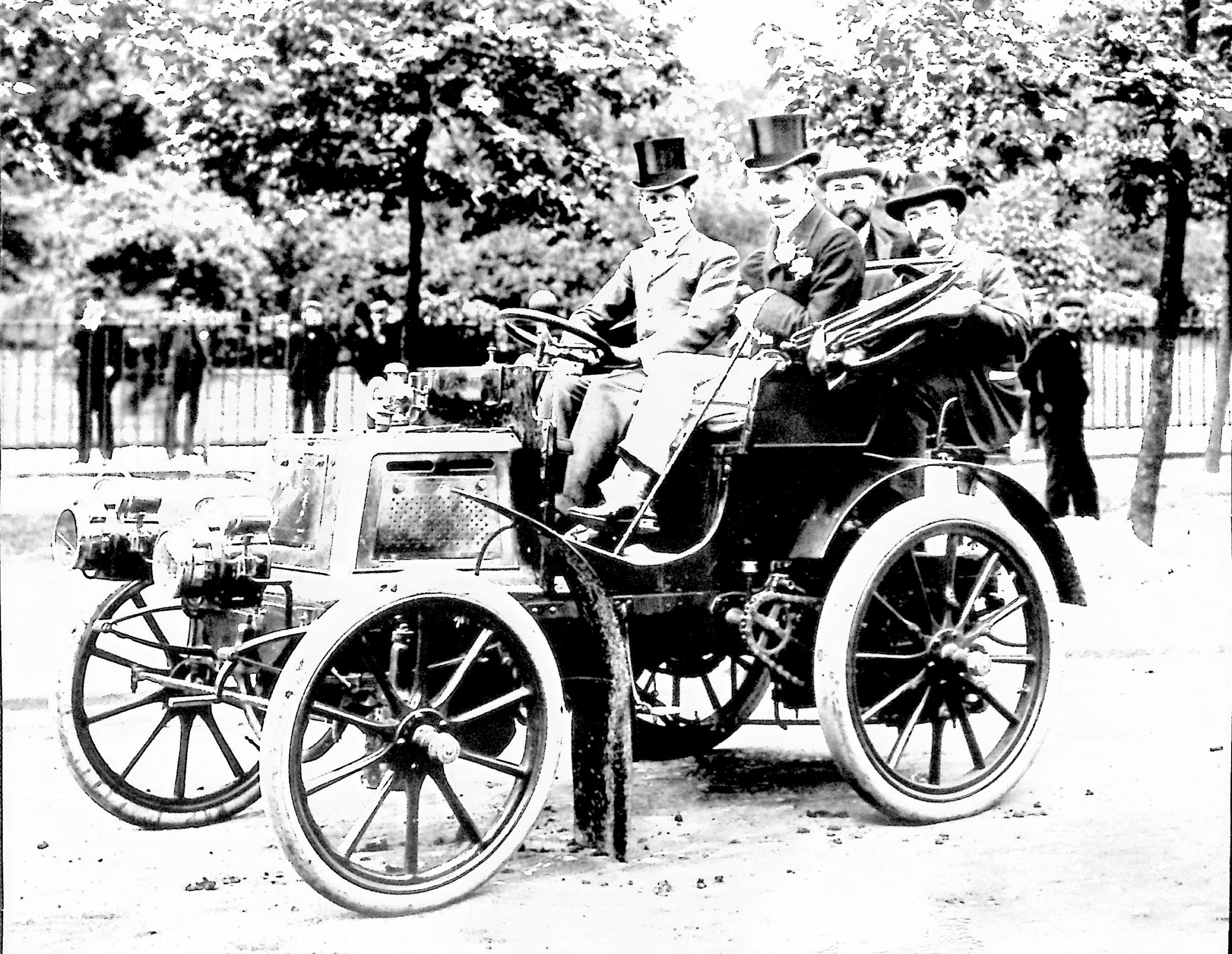
On the 1st January 1901 the car was sold for £650 by Friswell Ltd to G P Dawson of The Manor House, Prestbury, Cheshire.
In 1903 all cars needed to be registered; Dawson registered the Panhard on 4th December 1903 and received the mark M22. (This mark is now only used for display purposes and a replacement registration number BS 8166 is now used when the car is being driven on public roads.)
Mr Dawson made a number of modifications and changes to the car, including replacing the rear mounted radiator with a radiator from a Belsize. It appears in this picture with its M22 number plate.
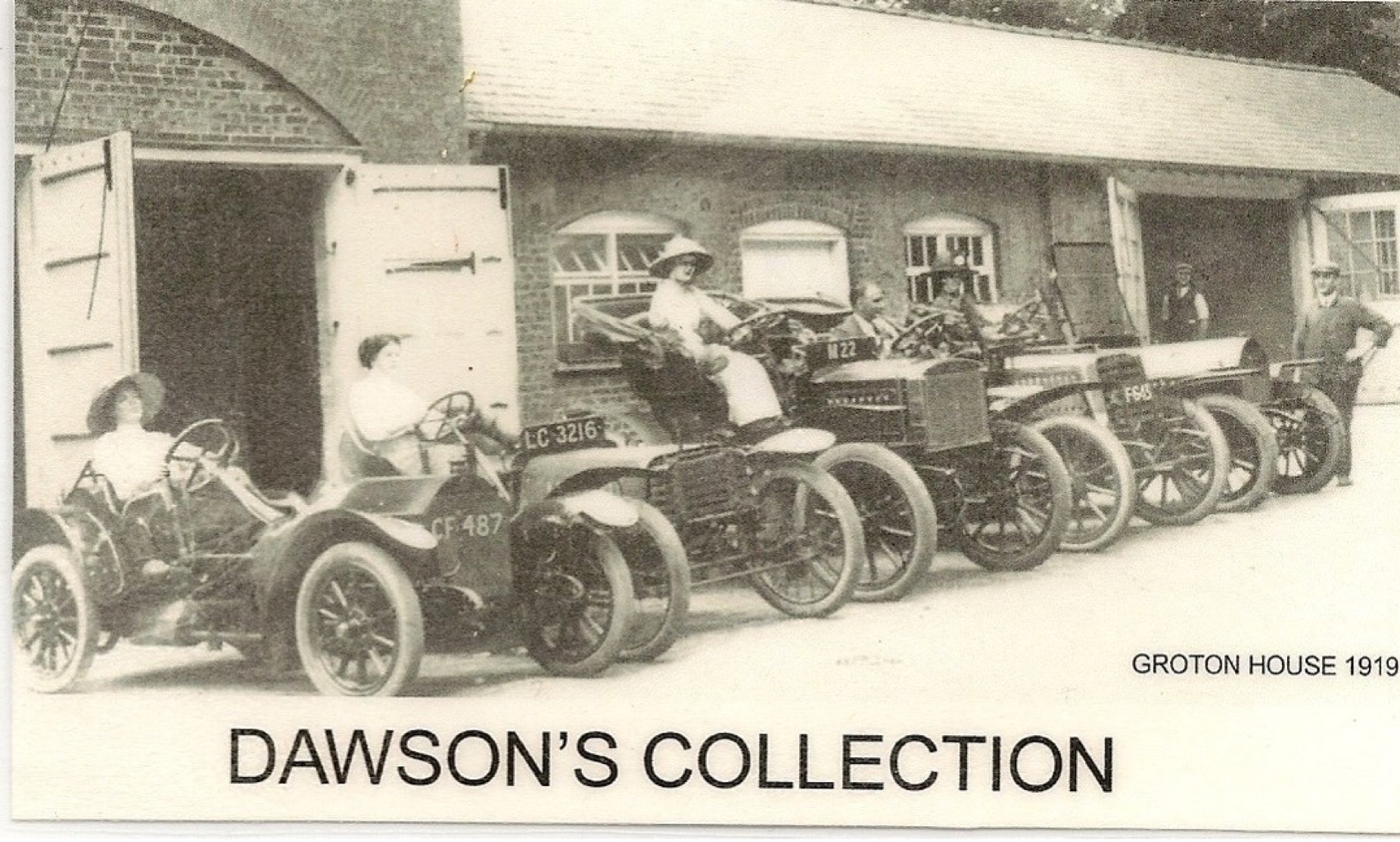
Dawson died in 1928 (by which time he had moved to Suffolk). The car remained in the family until 1934.
In 1934 the Panhard was acquired by Hubert Egerton, one of the founding partners of Mann Egerton. Egerton himself was a motoring pioneer, and had taken part in the 1000 Mile Trial on a De Dion.
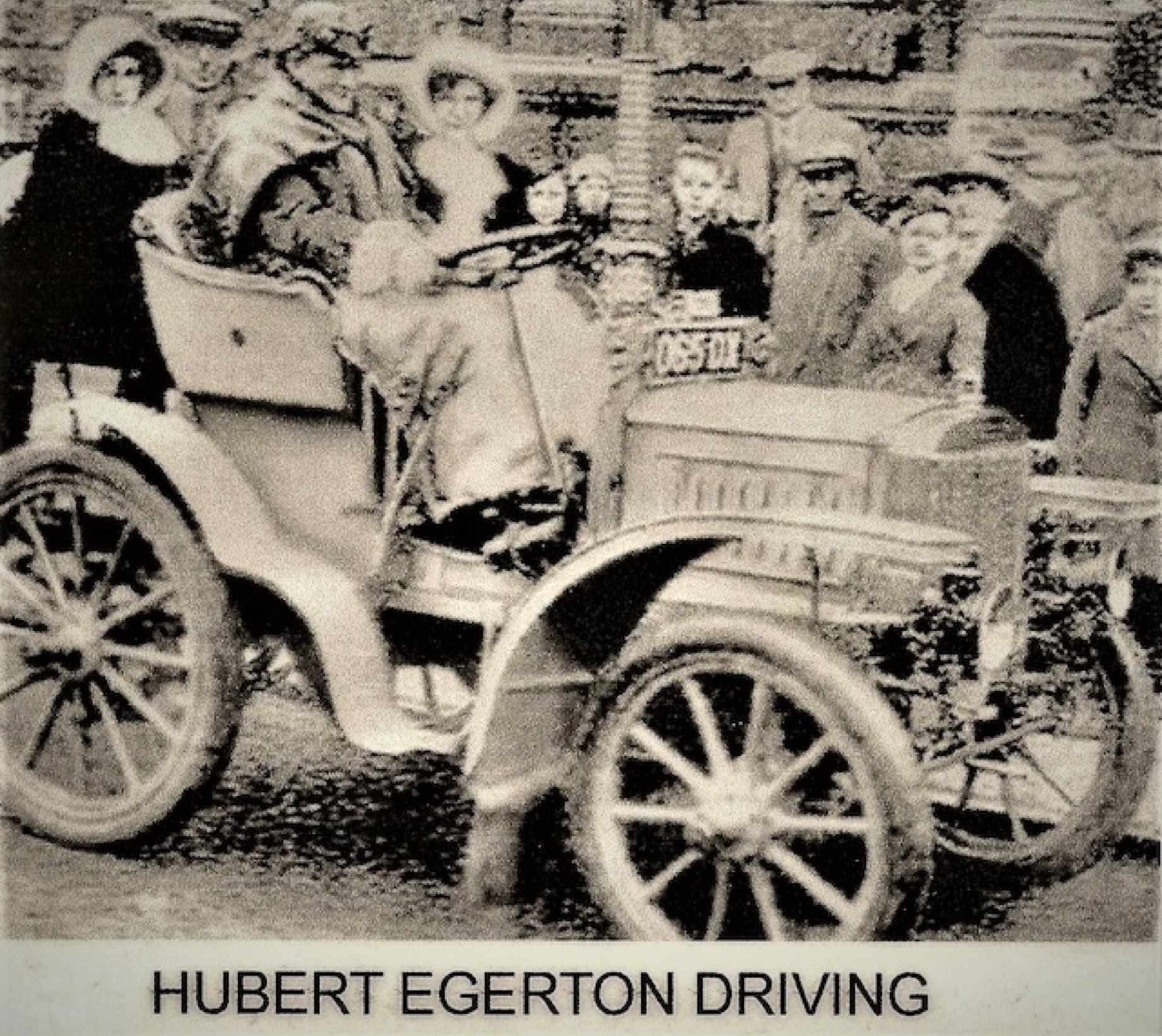
In 1936 Egerton gifted the vehicle to Norwich Castle museum. The car remained a static exhibit in the Bridewell and Strangers’ Hall museums until Rolls Royce kindly arranged for it to be restored by their apprentices in 1967. The overhaul took more than a year to complete.
Rolls Royce apprentices driving the car
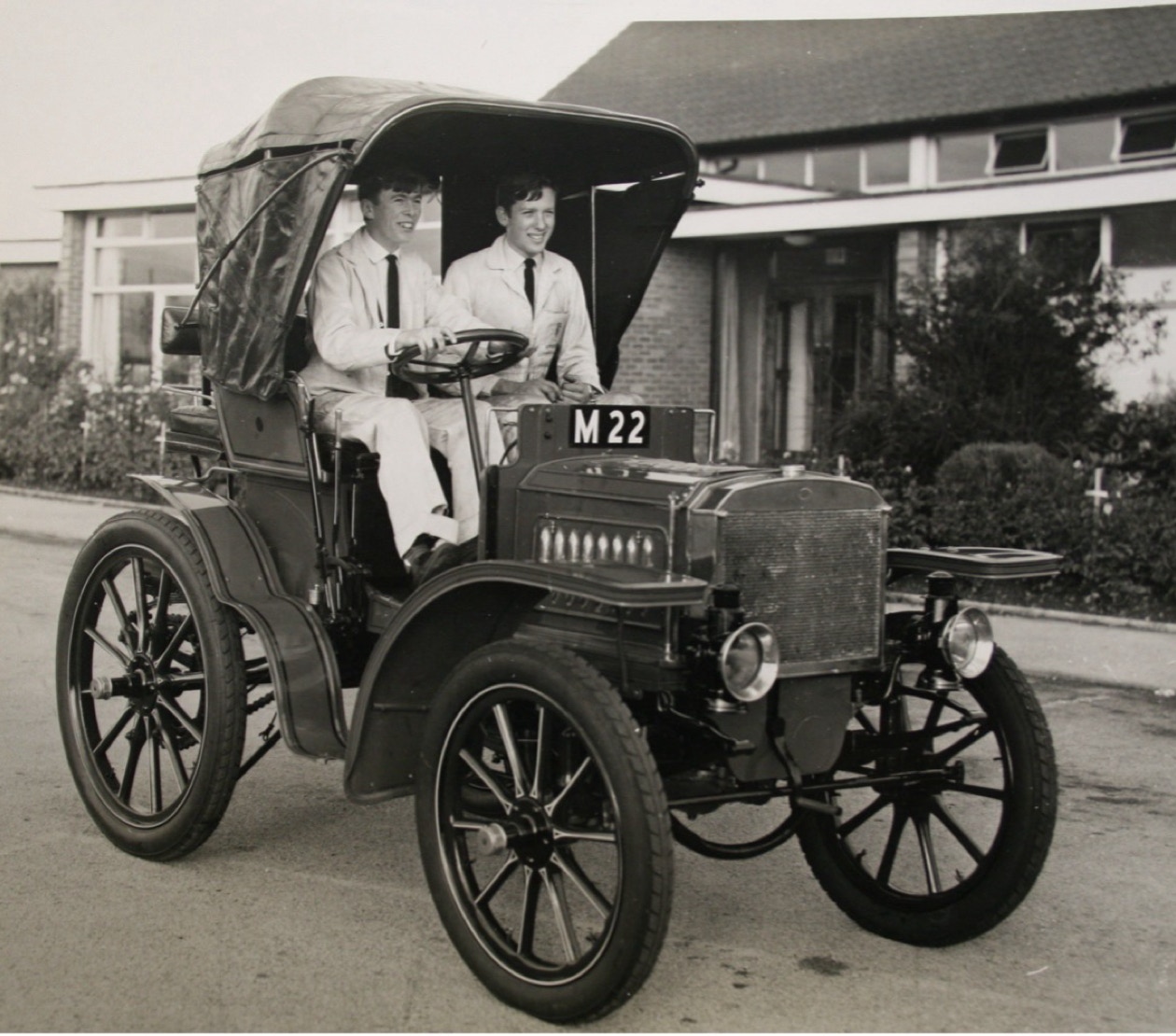
Shortly afterwards, the Museum explored the possibility of entering the car in the London to Brighton Run but decided against because the rear tyres were not suitable for such use. The car once again became a static display in Strangers’ Hall.
In1992 the car was used in the Castle Mound bridge opening ceremony at the Castle Museum.
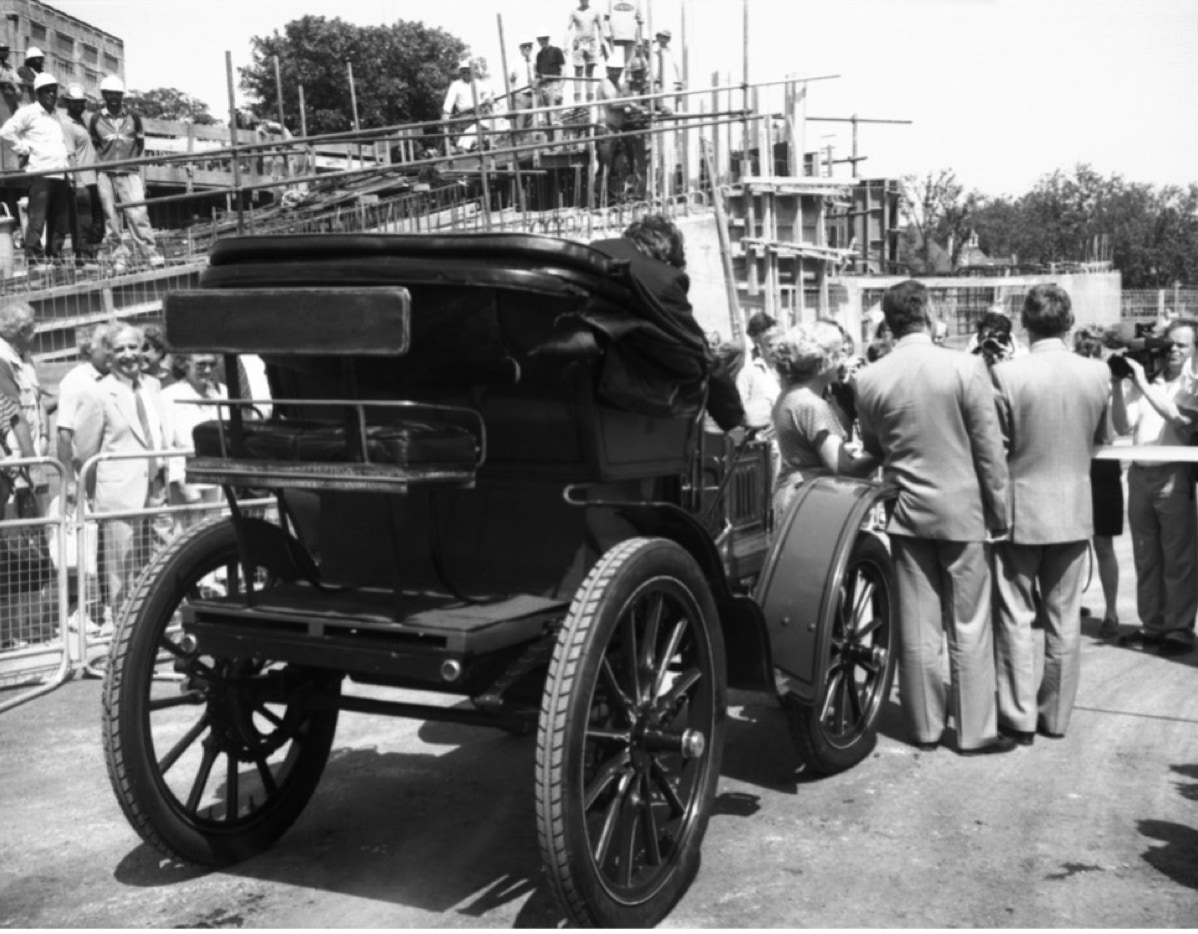
George Plunkett photo
Later that year the Museum agreed to fund the work necessary to get the car in working order and, in 1994, with the support of Catherine Wilson, the Head of the Museums Service, the car was entered into, and successfully completed, the London to Brighton Run.
One of the crew, Mike Vincent, was a prominent "Friend of Gressenhall Museum” and Catherine Wilson asked if he could form a team of volunteers to maintain and run the car.
After a complete overhaul of the engine the car again successfully completed the 1996 London to Brighton Centenary Run.
The car moved to the Gressenhall Farm and Workhouse museum where it became a popular exhibit. The Panhard is housed and on show to the public in its "garage" which is staffed by volunteers on most Wednesdays.
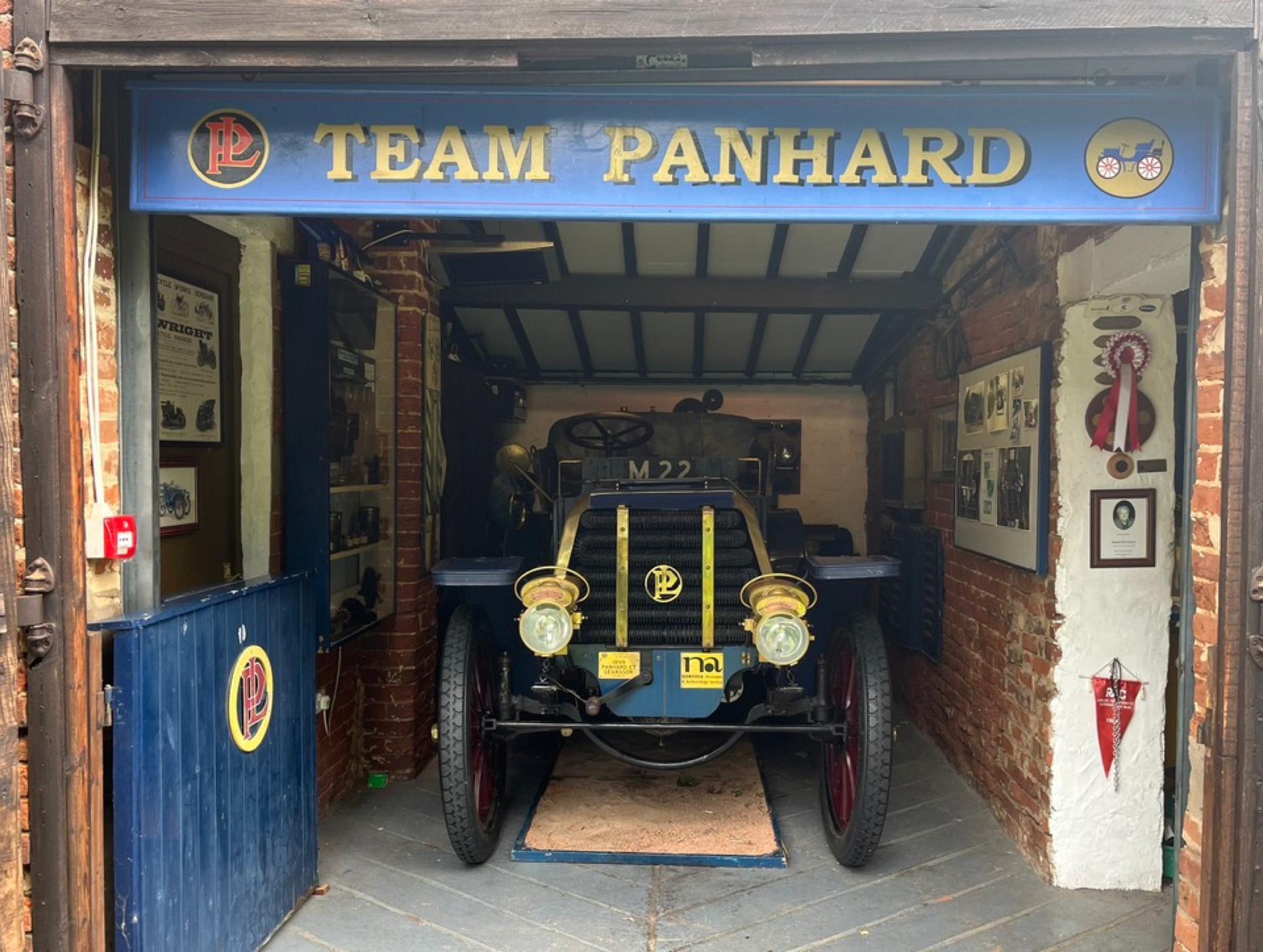
Page updated
23 September 2024
Copyright Team Panhard
2024